IEEE Talks IoT
IEEE Talks IoT is an ongoing series of Q&A articles with the IEEE experts.
IEEE Talks IoT: George Corser
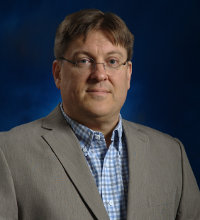 George Corser is assistant professor of computer science and information systems at Saginaw Valley State University. His Ph.D. dissertation focused on securing location privacy for vehicular applications. In this Q&A, he explores some of the key considerations and challenges for security in a variety of IoT applications, including autonomous ones.
George Corser is assistant professor of computer science and information systems at Saginaw Valley State University. His Ph.D. dissertation focused on securing location privacy for vehicular applications. In this Q&A, he explores some of the key considerations and challenges for security in a variety of IoT applications, including autonomous ones.
Question: What is autonomous IoT?
IEEE Talks IoT: Kathy Herring Hayashi
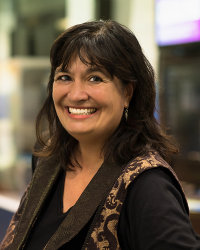 Kathy Herring Hayashi is a Senior Member IEEE, founder and chair of IEEE San Diego Women In Engineering, a computer science instructor at Palomar College and an independent software professional. In this interview, she connects her experience in semiconductors with the development of the Internet of Things (IoT).
Kathy Herring Hayashi is a Senior Member IEEE, founder and chair of IEEE San Diego Women In Engineering, a computer science instructor at Palomar College and an independent software professional. In this interview, she connects her experience in semiconductors with the development of the Internet of Things (IoT).
Question: How did you enter the computer science field?
IEEE Talks IoT: Joel Huloux
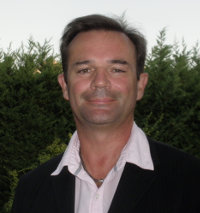
Joel Huloux, a senior member of IEEE, is chairman of the board of MIPI Alliance and director of lobbying and standardization, strategic planning for the microcontroller and digital ICs group at STMicroelectronics. In this interview, he discusses the challenges of integrating devices for the Internet of Things (IoT) and the strategic role interface specifications will play.
Question: How important are standards and specifications to the Internet of Things?
IEEE Talks IoT: Chris Miyachi
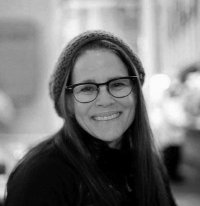 Christine “Chris” Miyachi chairs the IEEE Cloud Computing Community. She works as a systems engineer and software architect at Xerox Corporation, and is a graduate of the Massachusetts Institute of Technology (MIT). In this Q&A, Miyachi discusses big data, the Internet of Things (IoT) and cloud-related issues.
Christine “Chris” Miyachi chairs the IEEE Cloud Computing Community. She works as a systems engineer and software architect at Xerox Corporation, and is a graduate of the Massachusetts Institute of Technology (MIT). In this Q&A, Miyachi discusses big data, the Internet of Things (IoT) and cloud-related issues.
Question: As the Internet of Things (IoT) connects innumerable data-generating devices across the world, do you hear concerns in the cloud computing community that current approaches and technologies have limitations?
IEEE Talks IoT: Cicek Cavdar and Burak Kantarci
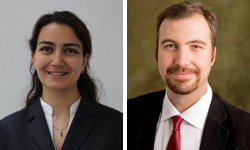 Dr. Cicek Cavdar and Dr. Burak Kantarci are both active in the IEEE Green ICT Initiative, which is driven, in part, by the advent of the Internet of Things (IoT). Cavdar was coordinator of the project 5GrEEn: Towards Green 5G Mobile Network, now Swedish cluster coordinator of the project SooGREEN – Service Oriented Optimization of Green Mobile Networks, and a senior researcher in the Communications Systems Department at the School of ICT at KTH, the Royal Institute of Technology, Sweden. Kantarci is a senior member of IEEE, an assistant professor in the Department of Electrical and Computer Engineering at the Wallace H. Coulter School of Engineering, Clarkson University, New York, and the founding director of the Next Generation Communications and Computing Networks (NEXTCON) Lab at Clarkson. In the following Q&A they discuss the imperatives of Green ICT as IoT flourishes.
Dr. Cicek Cavdar and Dr. Burak Kantarci are both active in the IEEE Green ICT Initiative, which is driven, in part, by the advent of the Internet of Things (IoT). Cavdar was coordinator of the project 5GrEEn: Towards Green 5G Mobile Network, now Swedish cluster coordinator of the project SooGREEN – Service Oriented Optimization of Green Mobile Networks, and a senior researcher in the Communications Systems Department at the School of ICT at KTH, the Royal Institute of Technology, Sweden. Kantarci is a senior member of IEEE, an assistant professor in the Department of Electrical and Computer Engineering at the Wallace H. Coulter School of Engineering, Clarkson University, New York, and the founding director of the Next Generation Communications and Computing Networks (NEXTCON) Lab at Clarkson. In the following Q&A they discuss the imperatives of Green ICT as IoT flourishes.
Question: How does growth of the IoT impact the urgency of the Green ICT movement?
IEEE Talks IoT: Vincenzo Piuri
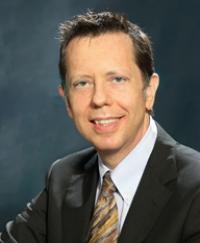 Vincenzo Piuri is a professor of computer engineering at the Università degli Studi di Milano. His research interests include intelligent systems, machine learning, industrial applications, pattern analysis and recognition, intelligent measurement systems, the theory and industrial applications of neural networks, signal and image processing, biometrics, and digital- and signal-processing architectures. An IEEE member, he was 2015 IEEE Vice-President Technical Activities and co-chair of the 2015 IEEE World Forum on Internet of Things. Piuri is an expert of IoT and some related technologies and talks about the need for interdisciplinary collaboration and new design methodologies to create successful products and applications.
Vincenzo Piuri is a professor of computer engineering at the Università degli Studi di Milano. His research interests include intelligent systems, machine learning, industrial applications, pattern analysis and recognition, intelligent measurement systems, the theory and industrial applications of neural networks, signal and image processing, biometrics, and digital- and signal-processing architectures. An IEEE member, he was 2015 IEEE Vice-President Technical Activities and co-chair of the 2015 IEEE World Forum on Internet of Things. Piuri is an expert of IoT and some related technologies and talks about the need for interdisciplinary collaboration and new design methodologies to create successful products and applications.
Question: How critical is collaboration for developing IoT technologies and getting adoption?
IEEE Talks IoT: Jacob West
 Jacob West is chief architect for security products at NetSuite and co-author of “WearFit: Security Design Analysis of a Wearable Fitness Tracker,” which supports the IEEE Center for Secure Design’s report, “Top Ten Software Security Design Flaws.” Both reports and the Center are part of the IEEE Cybersecurity Initiative. As this interview reveals, software secure design and wearable technology are intimately connected with the Internet of Things.
Jacob West is chief architect for security products at NetSuite and co-author of “WearFit: Security Design Analysis of a Wearable Fitness Tracker,” which supports the IEEE Center for Secure Design’s report, “Top Ten Software Security Design Flaws.” Both reports and the Center are part of the IEEE Cybersecurity Initiative. As this interview reveals, software secure design and wearable technology are intimately connected with the Internet of Things.
Question: You’ve co-authored a new report that uses a fictitious “WearFit” device to illustrate sound software security design in wearable fitness trackers. How does this example fit into the Internet of Things (IoT)?
IEEE Talks IoT: Geoff Mulligan
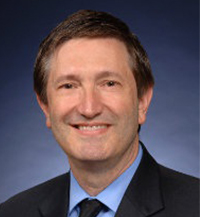 Geoff Mulligan is an American computer scientist who developed embedded Internet technology and 6LoWPAN and holds more than 15 patents in computer security, networking and electronic mail. As an IEEE member and IoT expert, he discusses its potential and how we might improve its security.
Geoff Mulligan is an American computer scientist who developed embedded Internet technology and 6LoWPAN and holds more than 15 patents in computer security, networking and electronic mail. As an IEEE member and IoT expert, he discusses its potential and how we might improve its security.
Question: Given all of the hype around the Internet of Things, how well as it lived up to its potential?
IEEE Talks IoT: Thomas Coughlin
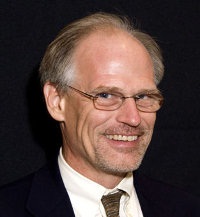 Thomas M. Coughlin is the founder of Coughlin Associates and has more than 30 years of digital storage engineering and engineering management experience. He is also chair of the annual Flash Summit, organizer of the annual Storage Visions and Creative Storage Conferences and a senior IEEE member. As an IoT subject matter expert, he discusses what has been learned to date from consumer wearables and the challenges and opportunities ahead.
Thomas M. Coughlin is the founder of Coughlin Associates and has more than 30 years of digital storage engineering and engineering management experience. He is also chair of the annual Flash Summit, organizer of the annual Storage Visions and Creative Storage Conferences and a senior IEEE member. As an IoT subject matter expert, he discusses what has been learned to date from consumer wearables and the challenges and opportunities ahead.
Question: What have we learned so far from the growth and adoption of consumer-targeted IoT devices, such as wearables?
IEEE Talks IoT: David Mountain
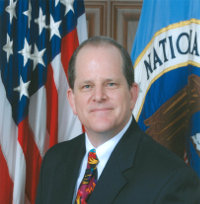 David J. Mountain is the Senior Technical Director at the Laboratory for Physical Sciences at Research Park, a Department of Defense research lab in Catonsville, MD. The LPS-RP mission is to collaborate with industry, academia, and the government to drive innovative research that will improve advanced computing systems for a range of mission applications including cybersecurity, cryptanalysis, and complex data analytics. His responsibilities include research activities in neuromorphic computing, advanced modeling and simulation, energy efficiency, productivity, and resilience. Mr. Mountain is the author of more than two dozen technical papers, has been awarded eight patents, and is a Senior Member of the IEEE.
David J. Mountain is the Senior Technical Director at the Laboratory for Physical Sciences at Research Park, a Department of Defense research lab in Catonsville, MD. The LPS-RP mission is to collaborate with industry, academia, and the government to drive innovative research that will improve advanced computing systems for a range of mission applications including cybersecurity, cryptanalysis, and complex data analytics. His responsibilities include research activities in neuromorphic computing, advanced modeling and simulation, energy efficiency, productivity, and resilience. Mr. Mountain is the author of more than two dozen technical papers, has been awarded eight patents, and is a Senior Member of the IEEE.
Question: What technologies and trends related to IoT will impact the computer industry and society in the next decade?
IEEE Talks IoT: Tim Godfrey
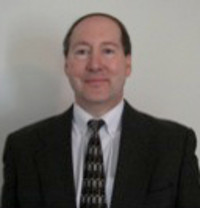
Tim Godfrey serves as Chair of the IEEE 802.24 Technical Advisory Group. His day job is Principal Technical Leader, Smart Grid Communications, in the Electric Power Research Institute’s (EPRI) Power Delivery and Utilization program, where Godfrey is involved in standardization, development, architecture, testing and demonstration in communication and telecommunication technologies beneficial to the power industry. Godfrey’s work on the IEEE 802.11 standard began in the private sector 21 years ago. In this interview, Godfrey discusses his work on the IEEE 802.11 standard and enhancements germane to both smart grid and IoT.
Question: Would you describe how you got involved with IEEE 802.11 and your current work on related standards?
IEEE Talks IoT: Latif Ladid
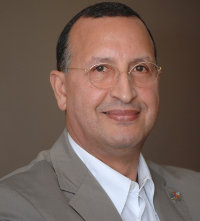
Latif Ladid is the chair of the upcoming IEEE World Forum on the Internet of Things (IoT). He is an IoT subject matter expert and discusses how Internet addresses and IPv6 technology can support the growing number of connected devices and their communications requirements.
Question: Does the IPv6 model recognize all of the requirements created by IoT?
IEEE Talks IoT: Doug Houseman

Doug Houseman’s 30-year career in the power industry includes a lead role in the IEEE Power and Energy Society’s Intelligent Grid Coordinating Committee, helping develop the National Institute of Science and Technology’s smart grid framework model. Doug is vice president for technology and innovations at EnerNex LLC, and as an IoT subject matter expert discusses opportunities around automatic monitoring and control in the home and how it can benefit the electrical grid.
Question: Homes are full of devices that never really completely shut off – televisions, computers and other media devices, for example. How can the Internet of Things help manage their energy consumption?
IEEE Talks IoT: Roberto Minerva
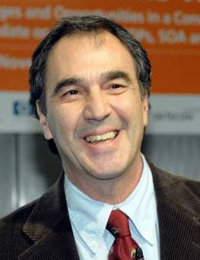
Roberto Minerva is the Chairman of the IEEE Internet of Things (IoT) Initiative aimed at creating within IEEE a large technical community in order to leverage the knowledge and skills available within IEEE. He is an IoT subject matter expert and discusses the opportunities being created by the IoT Scenarios initiative. Roberto is also on the organizing committee for the second annual IEEE World Forum Internet of Things, which will take place December 14-16, 2015, at the University of Milan, Italy.
Question: What was the primary reason for creating this resource?
IEEE Talks IoT: Raffaele Giaffreda
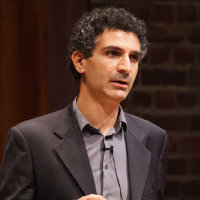
Raffaele Giaffreda is the Head of Smart IoT research group at CREATE-NET and former Coordinator of EU FP7 13m€ collaborative project iCore, merging IoT and Cognitive Computing, and serves as the Editor-in-Chief of the IEEE IoT eNewsletter. He is an IoT subject matter expert and discusses the opportunities around IoT-based automated monitoring applications and how more work should be done around IoT in the education sector.
Question: Where do you see the most obvious opportunities for the Internet of Things?
IEEE Talks IoT: Rob Fish
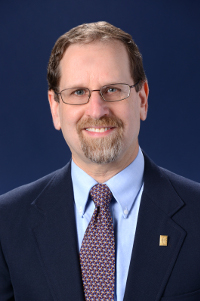 Dr. Robert S. Fish is Vice President for Standards Activities in the IEEE Communications Society and President of Netovations, LLC. He is a Member-at-large, IEEE Standards Association Board of Governors; Chair of IEEE Standards Association’s Global Committee; and a founding member of the IEEE Standards Association Corporate Advisory Group.
Dr. Robert S. Fish is Vice President for Standards Activities in the IEEE Communications Society and President of Netovations, LLC. He is a Member-at-large, IEEE Standards Association Board of Governors; Chair of IEEE Standards Association’s Global Committee; and a founding member of the IEEE Standards Association Corporate Advisory Group.
In this interview, Dr. Fish discusses why the Internet of Things (IoT) may require multiple IoTs (or Intranets of Things), the importance of telecom-related standards for IoT, the opportunities to participate in standards development through IEEE Standards Association (IEEE-SA) and the challenges of addressing scale in an IoT that may link billions or maybe trillions of “things.”
Question: You have suggested that IoT might split into more than one global network – perhaps one for consumers, another for commercial/industrial traffic. “Intranets of Things” might also proliferate. What drives your thinking?
IEEE Talks IoT: Chuck Adams
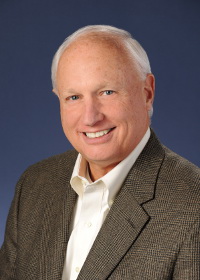
Dr. Wilbert Charlton (Chuck) Adams, Jr. served as president of the IEEE Standards Association (IEEE-SA) in 2009-2010 and he currently sits on its Board. Chuck is actively involved in the IEEE-SA Internet of Things (IoT) strategy and was a founding member of the IEEE IoT development program. He is currently affiliated with Huawei Technologies as Distinguished Standards Strategist. Here, he discusses the development of standards for IoT, including its broad scope, and how the development of Smart Grid standards serves as a source of some guidance.
Question: Establishing standards for IoT is critical to the creation of a viable ecosystem of devices and services. How does the development of standards for IoT differ compared to other technologies?
IEEE Talks IoT: Steve Collier
 Steve Collier is Director, Smart Grid Strategies, at Milsoft Utility Solutions and is an IEEE Smart Grid expert. In this interview, Steve discusses the convergence of Smart Grid and IoT, and how the Internet and IoT are essential to the success and security of a Smart Grid.
Steve Collier is Director, Smart Grid Strategies, at Milsoft Utility Solutions and is an IEEE Smart Grid expert. In this interview, Steve discusses the convergence of Smart Grid and IoT, and how the Internet and IoT are essential to the success and security of a Smart Grid.
Question: Developing of the Smart Grid is often compared to the development of the Internet of Things (IoT). How do you see them intersecting?
IEEE Talks IoT: Victor Larios
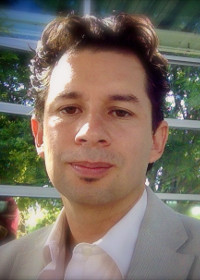 Victor Larios is the volunteer leader of the IEEE Smart Cities Initiative Guadalajara Pilot in Guadalajara, Mexico. From this perspective, Victor discusses the role of the Internet of Things (IoT) in Smart Cities, why Guadalajara is an ideal choice for the IEEE Smart Cities Initiative and to its IoT potential, and the importance of education that ensures the development of IoT-related skills critical to creating Smart Cities.
Victor Larios is the volunteer leader of the IEEE Smart Cities Initiative Guadalajara Pilot in Guadalajara, Mexico. From this perspective, Victor discusses the role of the Internet of Things (IoT) in Smart Cities, why Guadalajara is an ideal choice for the IEEE Smart Cities Initiative and to its IoT potential, and the importance of education that ensures the development of IoT-related skills critical to creating Smart Cities.
Question: How fundamental is IoT to the development of a Smart City?
IEEE Talks IoT: Roberto Saracco
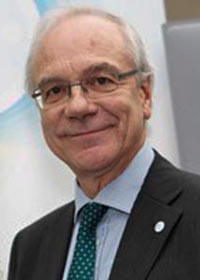 Roberto Saracco is a senior member of IEEE where he leads the Future Directions Committee and he publishes a blog with daily posts on advances in science and technology. He is the president of EIT ICT Labs Italy and Italy Node Director, EIT (European Institute of Innovation and Technology). As an Internet of Things (IoT) expert, he discusses how devices such as wearables will develop similarly to smartphone applications, where IoT innovation will come from and some of the key technological challenges.
Roberto Saracco is a senior member of IEEE where he leads the Future Directions Committee and he publishes a blog with daily posts on advances in science and technology. He is the president of EIT ICT Labs Italy and Italy Node Director, EIT (European Institute of Innovation and Technology). As an Internet of Things (IoT) expert, he discusses how devices such as wearables will develop similarly to smartphone applications, where IoT innovation will come from and some of the key technological challenges.
Question: Consumers have an expectation that electronics such as smartphones will become cheaper or at least improve while staying at the same price. How does this create challenges for companies looking to create the next generation of IoT devices such as wearables?


